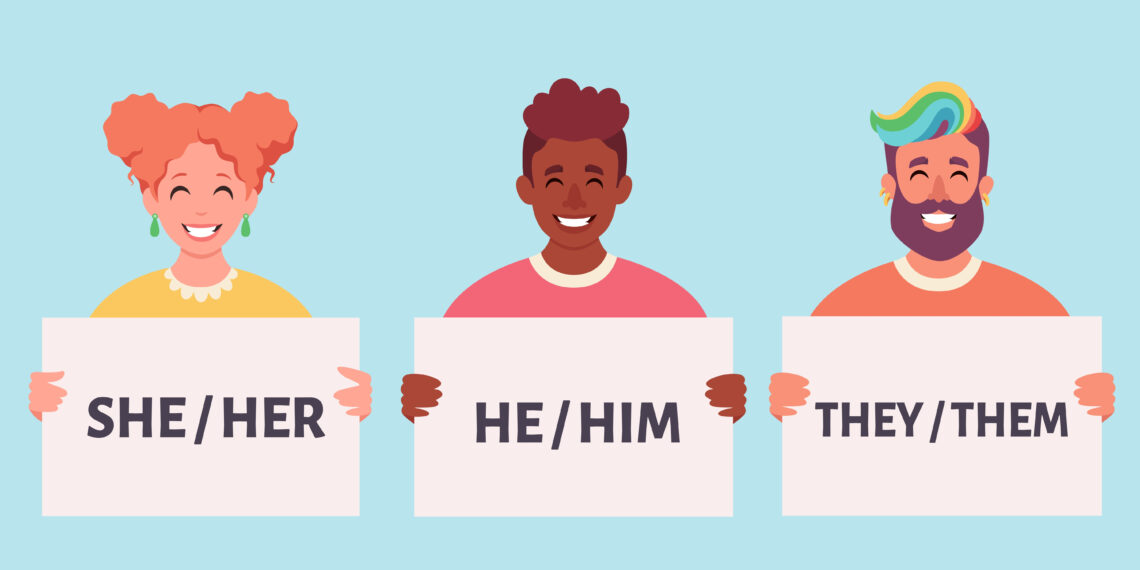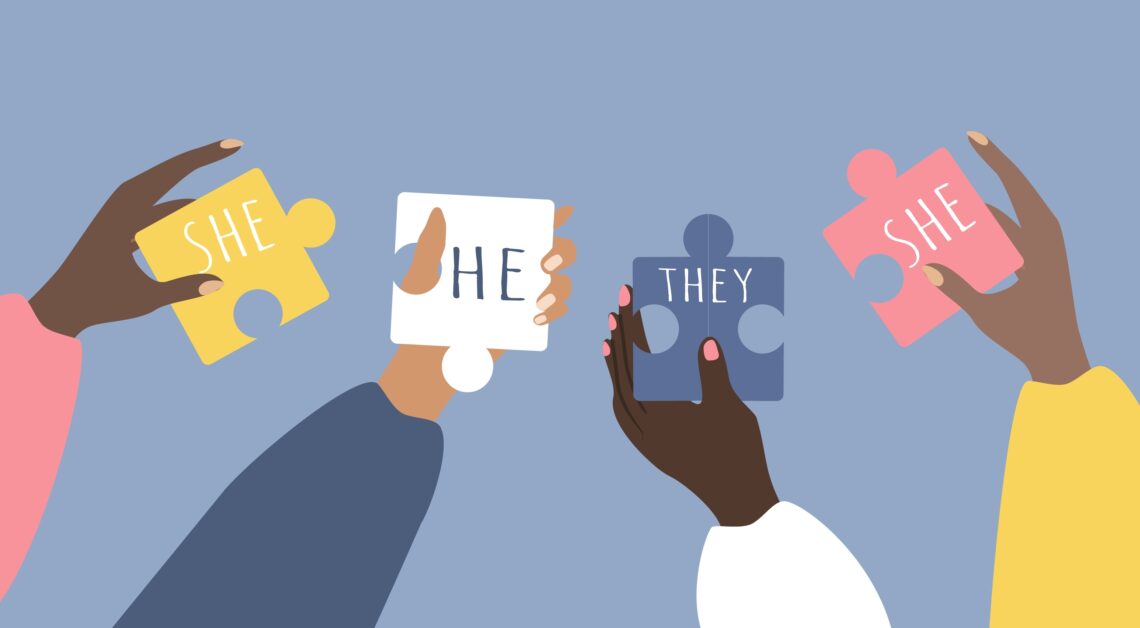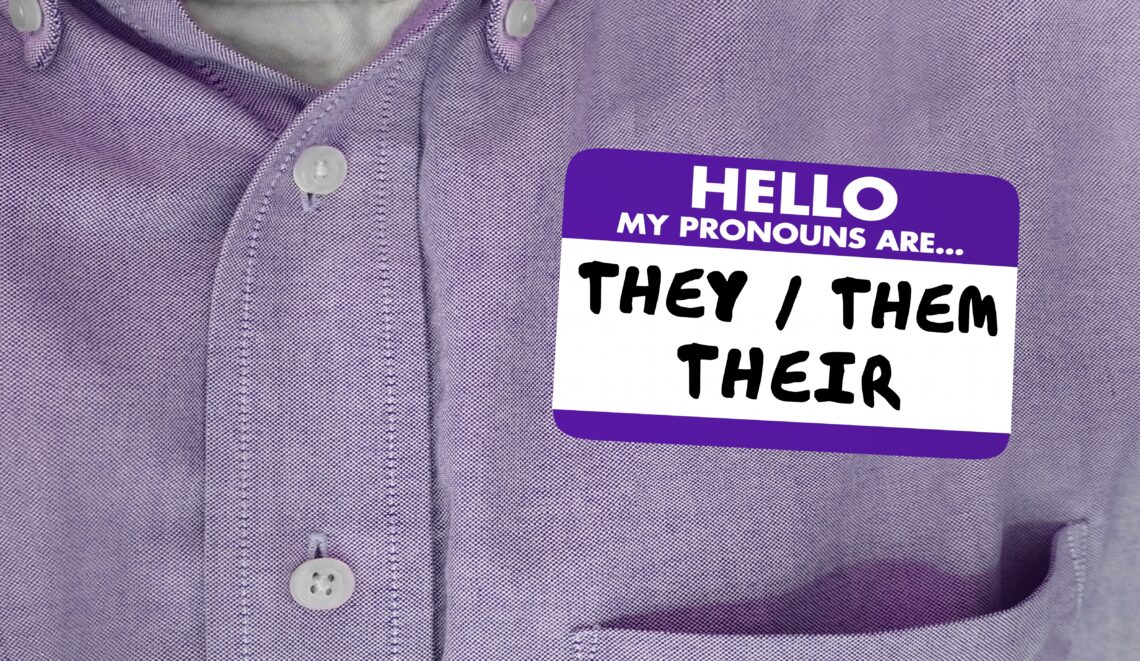In the English language, we have masculine and feminine pronouns, which can be difficult for people who don’t identify as male or female. In recent years, there has been a push to add more gender-neutral pronouns into the English language. If you’re not sure what these are, or you’re unclear about how to use them, read on.
Here, we explain everything you need to know about gender-neutral pronouns and gender pronouns as a whole, as well as provide a list of pronouns used today.
Related: The Crown’s Emma Corrin shares new pronouns & opens up about gender journey
What Are Gender Pronouns?
Pronouns are words that are used to substitute nouns in a sentence. We also use pronouns to refer to people other than their names.
Never Miss a Beat
Subscribe to our newsletter to stay ahead of the latest LGBTQ+ political news and insights.
In English, we have the pronouns he/him/his to refer to people who identify as men and the pronouns she/her/hers for people who identify as women.
Gender-neutral Pronouns
Gender-neutral pronouns are pronouns that are often used by a speaker when referring to someone whose gender is unknown. The most common example of gender-neutral pronouns is the singular they/them/theirs pronouns.
For example, you can say “Someone left a package outside your door. They didn’t leave a note though.” or “I called a plumber to check out the sink. I’m expecting them at 4 pm.”
Gender-neutral pronouns are also often used by non-binary and gender non-conforming people who don’t strictly identify as either male or female.

Neopronouns
Although the singular “they” is the most popular gender-neutral pronoun, there are several other options out there. The term “neopronouns” describes a new category of gender-neutral pronouns that are used as an alternative to they/them/theirs pronouns.
Some examples of neopronouns include ey/em/eirs and ze/zir/zirs.
Rolling Pronouns
Some gender non-conforming and transmasculine/transfeminine people prefer using more than one set of pronouns. These are called rolling pronouns and can be used alternately in a sentence or across separate sentences.
Some people prefer using different sets of pronouns on different days depending on how they identify. This is particularly true for people who identify as genderfluid or whose gender is in a constant state of flux.
Examples of people who use rolling pronouns include actor Elliot Page (he/they), singer Halsey (she/they), and Queer Eye’s grooming expert Jonathan Van Ness (she/they/he).
List Of Gender Pronouns
Unfortunately, we can’t provide an exhaustive list of all pronouns, as people come up with new pronouns all the time. Here is an incomplete list of some of the most commonly used gender pronouns today:
| Subject | Object | Possessive Determiner | Possessive Pronoun | Reflexive |
| ce | cir | cir | cirs | cirself |
| co | co | cos | cos | coself |
| cy | cyr | cyr | cyrs | cyrself |
| ey | em | eir | eirs | emself |
| he | him | his | his | himself |
| hey | hem | heir | heirs | hemself |
| ne | nem | nir | nirs | nemself |
| qui | quem | quis | quis | quemself |
| she | her | her | hers | herself |
| sie | hir | hir | hirs | hirself |
| tey | tem | teir | teirs | temself |
| they | them | their | theirs | themself |
| xe | xem | xyr | xyrs | xemself |
| xie | hir | hir | hirs | hirself |
| yo | yo | yos | yos | yoself |
| ze | zir | zir | zirs | zirself |
| ve | vis | ver | ver | verself |
Why Do Pronouns Matter?
Pronouns are personal identifiers, just like people’s names. By respecting someone’s pronouns, you show the person that you respect who they are and how they identify.
This is particularly important for transgender and non-binary people who may wrestle with gender dysphoria – a feeling of discomfort or distress associated with the mismatch between their sex assigned at birth and gender identity. For these people, being referred to with the correct pronouns can help alleviate that dysphoria, increase their self-esteem, and improve their overall sense of self.
Using people’s correct pronouns – and talking about the importance of doing so – also encourages others to follow suit. This paves the way for more inclusive attitudes towards gender-expansive people.

How To Be Respectful Of Other People’s Pronouns
It goes without saying that you should never purposefully misgender someone if you already know their personal pronouns. But how else can you be inclusive and respectful of other people’s pronouns?
Never Assume A Person’s Pronouns Based On How They Look
In the same way that we shouldn’t assume people’s genders based on how they look, we also shouldn’t assume what other people’s pronouns are. Doing so can reinforce harmful gender stereotypes.
Offer Your Pronouns When Meeting Someone New
Most people assume that only LGBTQ people share their gender pronouns. But having a list of pronouns isn’t just an LGBTQ thing.
Again, by being open about our own gender pronouns, we can normalize the idea of sharing pronouns. This makes it easier for transgender and gender non-conforming people to share their pronouns with others and helps them feel safe to share their pronouns with you.
Apologize When You Get Someone’s Pronouns Wrong
It may be challenging to get the hang of using someone’s personal pronouns, especially if you’re used to referring to someone in a certain way. As such, try not to panic if you accidentally address someone with the wrong pronouns.
But you also have to assure the other person that you are not purposefully misgendering them. When doing so, it is best to apologize quickly and avoid making a fuss over the blunder. You don’t want to call attention to the situation or put the other person in an awkward or uncomfortable spot.

Add Your Gender Pronouns To Your Social Media Bios, Email Signatures, Etc.
One easy way to encourage the use of personal pronouns is by adding them to your social media bio, email signature, business card, etc. This can encourage others to follow suit and signals to transgender and non-binary friends and colleagues that you are an ally they can trust.
Avoid Phrases Like ‘Preferred Pronouns’
You may have heard the term “preferred pronouns” in reference to gender pronouns. While this is fairly common, many in the trans and non-binary community try to avoid this language, as it suggests that their correct pronouns are merely a preference or a suggestion. Instead, try using words like “personal pronouns” or, simply, “pronouns”.
Did You Enjoy Our List Of Pronouns?
Words matter. Language helps us understand parts of ourselves and allows us to communicate who we are to other people. As such, everyone needs to recognize that other people’s pronouns, much like their name and gender identity, should be acknowledged and respected.
If you enjoyed this article, check out the related articles to learn more about how to be more inclusive toward trans and non-binary people.
Related: How to know if you are non-binary
Don't forget to share:













